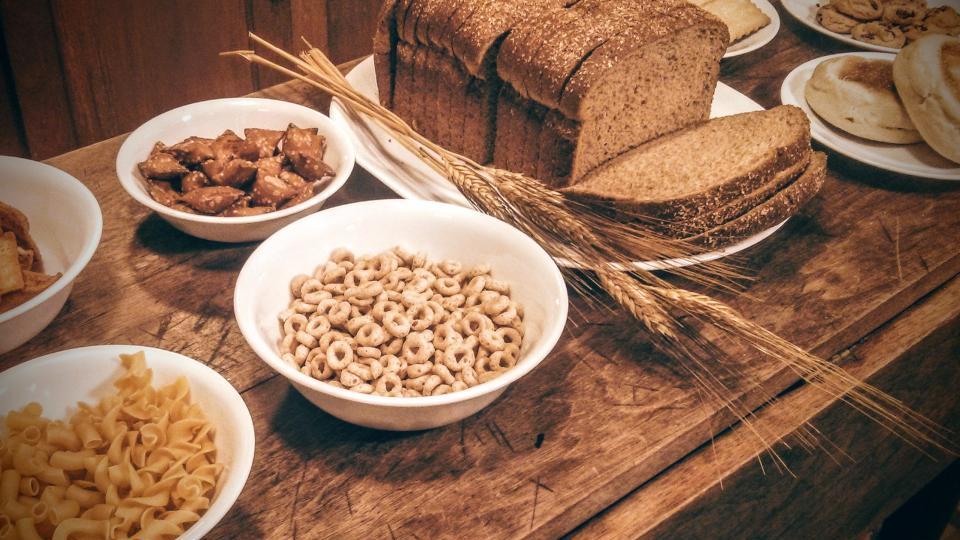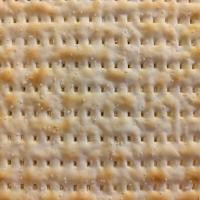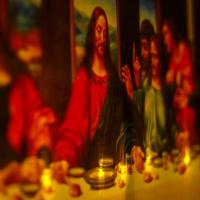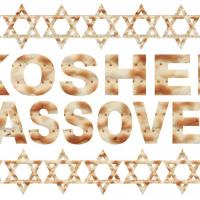Beth Immanuel is a friendly and welcoming community. Click here to learn what to expect when you visit.

Leaven and Passover
Seven days you shall eat unleavened bread. On the first day you shall remove leaven out of your houses, for if anyone eats what is leavened, from the first day until the seventh day, that person shall be cut off from Israel. (Exodus 12:15)
The word translated "leaven" or "leavened bread" is the Hebrew word chametz. It does not actually mean "leaven" or "leavening" in the sense that we use the word today. Chametz is any grain product in which fermentation has occurred. It is related to the word chamutz, which means "sour."
In ancient times as well as in breads such as sourdough today, bread could be leavened just by allowing the dough to sit for a period of time until enough of the yeast in the air works its way into it and begins to ferment the dough.
Keep in mind that the Hebrew word chametz does not imply anything about the fluffiness or softness of the food, but only that it has been fermented. This is one area where our English language leads us astray.
Fermentation occurs whenever flour or grain comes in contact with water. It may or may not be perceptible in the form of fluffiness or taste. Fermentation is the process of yeast (which occurs naturally in the air) breaking the sugars into alcohol, releasing carbon dioxide. Since fermentation begins immediately, it is impossible to have bread in which absolutely no "leavening" has occurred (outside a laboratory). For all practical purposes, fermentation ends when the product is cooked. Thus, for bread to be "unleavened," there has to be a defined maximum amount of time between when the flour comes in contact with water and when baking is completed. The Bible does not tell us what that time is.
Jewish law defines chametz as any grain product that has been combined with water and has been allowed to sit longer than eighteen minutes before being fully cooked. This means that many foods you might not expect can be considered chametz, such as noodles, crackers, or cookies as well as both fluffy loaves of bread and flatbreads such as pitas or tortillas. Ultimately, that means any grain product in your house other than kosher-for-Passover matzah.
Grain vinegar is also a fermented grain product, and so it is forbidden. Grain vinegar is present in many foods, such as ketchup and mustard. If the label does not indicate what type of vinegar it is, it is probably from grain. Other vinegars such as from cider or wine are not prohibited, as long as they do not contain grain vinegar as well.
Many alcohols are also produced from fermenting grain as well. Beer and many spirits are thus prohibited. Alcohols that are not made from grain are not prohibited, such as wine from grapes. Grain alcohol is present in many food flavorings, such as vanilla extract. It is probably present in trace amounts in any food that lists "natural flavors" on the label.
Other leavening agents (such as baking soda) that release gases through a non-biological process are not prohibited. So you wouldn't need to remove a canister of baking soda, although you probably shouldn't use it during Passover in a way that would involve combining flour with water.
Other types of microbiological processes are not prohibited, so foods with bacterial cultures such as yogurt or natural sauerkraut can be kept.
Most people remove flour before Passover as well. Flour is not chametz exactly, but if by accident or negligence your flour comes in contact with moisture it will create chametz, which would be problematic. Removing flour also removes that possibility.
Chametz is limited to grain products, which is borne out by the fact that wine and wine vinegar are present and consumed during Passover in the Gospels. This makes sense, because it was bread making at the time of the exodus that led to the prohibition of chametz. Bread, as it was known to the ancient Israelites, could be made of five different types of grain: wheat, barley, spelt, oats, and rye. Since other products that we conventionally think of as grain (such as rice or corn) would not have been accessible to ancient Israelites, they do not constitute chametz.
The safest way to know if something is kosher for Passover is if a reliable kosher for Passover certification appears on the label.
For more information on this or other topics related to biblical kosher eating, take a look at the book Biblically Kosher. (The above information was reprinted with permission.)
How to Remove Leaven
A thorough search of the house should be made prior to Passover. Because removal of leaven involves looking in every crack and crevice, behind appliances and under furniture, it is common to use the opportunity for some spring cleaning. This is not mandatory, however.
Places you should look:
- Every room of the house. Though you may not eat everywhere, food might have been brought there inadvertently.
- Shelves and cupboards. Including the top of cupboards, if they are used.
- Cracks, holes, and crevices. Unless they are out of reach.
- Under beds.
- Pockets. Especially children’s!
- Be sure to clean ovens (by setting them to the highest heat setting for 1-2 hours), microwave ovens, refrigerators, and sinks, all closets and counters, pots and utensils. Wash your table linens and napkins (without starch).
The Ritual Search
On the night of the fourteenth of Nissan, the night before the Passover seder, an intentional, ritual search of the house is performed. To do this, these items are needed: a candle, a feather (or toothbrush), a wooden spoon, and a piece of cloth (or a small paper bag). It is customary to place items of chametz (something that doesn’t make crumbs) in ten different places in the house, so that the searcher will actually find something. A child can be given the task of hiding the chametz.
All the lights in the house are turned off, and the candle is lit. Since it is a mitzvah to remove the leaven, it is begun with a blessing:
“Blessed are You, Lord our God, King of the Universe, Who sanctified us with His commandments, and commanded us concerning the removal of leaven.”
Every corner of the house is searched by candlelight. When chametz is found, it is swept onto the spoon with the feather, and then put in the cloth or bag.
After all of the chametz has been found, this declaration is made:
“All manner of leaven that is in my possession, that which I have not seen, and that which I have not removed, shall hereby be annulled, and accounted as the dust of the earth.”
The next morning, chametz may no longer be eaten. The cloth bag of chametz, along with the feather and the spoon are burned outside. Before burning, this declaration is made:
“All manner of leaven that is in my possession, that which I have seen and that which I have not seen, that which I have removed, and that which I have not removed, shall hereby be annulled and accounted as the dust of the earth.”
More Messianic Passover Teachings
Want more about Passover from a Messianic Jewish perspective? Check out our Passover page!




